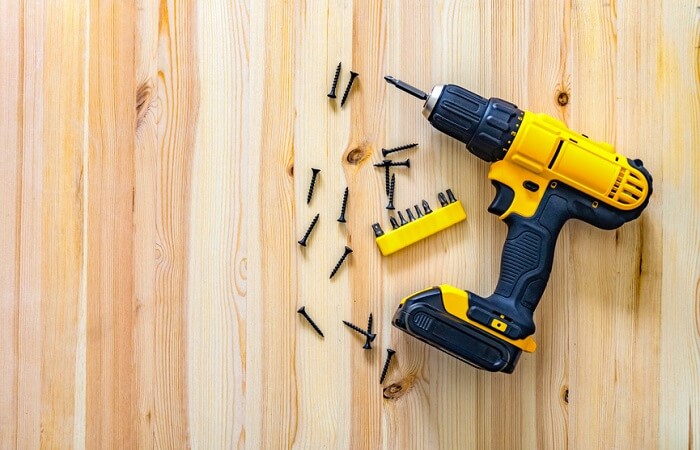
Rarely is there a time when a person is 100% satisfied with their home. Most of the time, there are snags to be fixed and improvements to be made. You could go down the route of hiring a handyman or simply buying everything you want from a homeware store, but this is expensive. You also run the risk of things not looking exactly ow you’d imagined them and having to compromise.
With rising living costs and countless Instagram home trends to keep up with, not to mention endless days of potential lockdowns and cancelled events to fill, home improvement is fast becoming the go-to option for many.
Infographic Provided by Radon Inspection Company, Home MD
If you’re thinking about dabbling in DIY, or if you simply want to be prepared for any potential problems that could arise where your skills will be called upon, here are 10 of the best tools you may need.
- Cordless drill
In the same way cordless vacuums and wireless charging pads have changed our day-to-day lives for the better, a cordless drill will revolutionize how you go about doing DIY jobs. No more searching for a plug socket and debating what can be unplugged to make way for a power tool. Gone are the days of trying not to catch anything with the cord or attempting not to fall over.
Perhaps most excitingly, you’re not restricted in the slightest of where you can go with your drill. Go as high or as wide as you like! A cordless drill really will change your DIY life for the better,
- Electric sander
If you’re looking to do anything with wood, chances are it will need sanding down. You could do this by hand, or you could do it electronically. We know which one we’d prefer – and it’s not the first option.
- Circular saw
Again, if you’re anticipating needing to cut anything, be it a piece of MDF or a blind that’s too big, a circular saw is the best option and will certainly make the job a lot easier. You never know when you might need a saw, but if you plan on making furniture from scratch or jumping on the DIY paneling bandwagon, a circular saw will serve you well.
- Nail gun
You could hammer a nail into a wall or use a hammer to put furniture together, or you could use an electric nail gun. It’s faster, more efficient and in some cases, more accurate. Plus, there’s no risk of accidentally hammering your thumb – win-win!
- Sawhorse
If you plan on sawing anything, you’ll need a surface to saw on. A sawhorse is a great way to do this because it can easily be put away when not in use, but it’s sturdy enough to hold what you need. Most sawhorses also come with a built-in vice which is great for securing smaller items in place, too.
- Utility knife
It’s so common it’s easy to overlook. Not much needs to be said about a utility knife other than make sure you have a good one!
- Electric screwdriver
In the same way a nail gun removes the need to hammer something, an electric screwdriver eliminates the need for you to manually screw something in. If you’re building a flat pack item, this could save your hands from cramp and even blisters. Most electric screwdrivers also come with varying heads, so never again will you be searching for a flat head when you only have a cross head.
- Safety goggles
When you’re sawing, painting or doing anything where debris could fly off, safety goggles are essential for keeping your eyes safe.
- Safety gloves
It’s not just your eyes you need to protect – you need to protect your hands, too. This is more important where woodwork is concerned because of the risk of splinters.
- Safety boots
Last but by no means least on our list is safety boots. Whether you’re working on the roof and need added stability, or if you’re doing any yard work and need protection from large equipment, safety boots like Buckbootz wellies are a great option.
Summary
How many of these 10 tools do you have already in your toolkit? How many do you need to add? If you have any trusty tools you can’t live without for DIY, let us know what they are.
